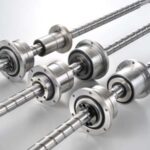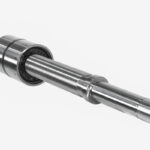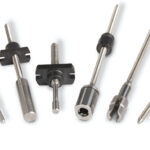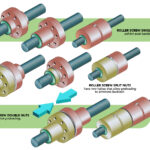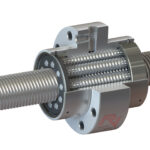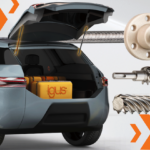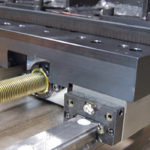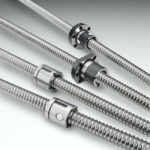The two types of ballscrew splines from NB Corp. are the SPBR and the SPBF. The SPBR type has a rotary ballscrew nut and rotary ball spline nut. The rotary ballscrew nut is an integration of ballscrew nut and angular contact bearings. The rotary ball spline nut is an integration of ball spline nut and […]
Ball + lead + roller screws
New Moog program guarantees customized roller screws in six weeks
Moog has launched its “Roller Screw Fast-Delivery Program” to ship industrial customers the most requested roller screws, diameters from 15 to 39 mm (0.59 to 1.53 in.) within six weeks of receiving an order. “The major challenge customers currently face is the uncertainty of their supply chain,” said Roberto Donghi, site manager for Moog’s Bergamo, […]
Miniature lead screws for compact application designs
Thomson Industries, Inc., has introduced a line of miniature lead screws and nuts. This new offering extends the Thomson lead screw product line to include 2-, 3- and 4-millimeter diameters. “OEMs are increasingly demanding components for smaller assemblies, and we are pleased to announce that Thomson high-quality lead screws and nuts are now available in […]
How to choose a roller screw nut assembly
Updated August 2023 • A roller screw’s application will dictate whether the shaft or nut should rotate. In either case, the type of nut selected depends on the load and how the assembly will move and actuate the system. There are three major types of roller screw nuts: Single, split, and double. Single nuts are […]
How to select the right roller screw size
Roller screw systems typically have smaller footprints and more compact designs than their hydraulic counterparts. One motivation to replace hydraulics with roller screws is to reduce bulky and auxiliary equipment and its associated maintenance without compromising performance. Roller screw shafts come in a variety of diameters and load capacities. Some are 3.5 mm in diameter with […]
Lead-screw assemblies from igus for automotive applications
igus’ dryspin lead-screw assemblies are now available as a single-source solution for the automotive industry. In today’s vehicles, advanced linear motion components play a critical role in providing convenience and safety to drivers. Lead-screw assemblies are used extensively wherever automotive parts need to be opened, closed, lifted, or lowered. Typical uses include seats, doors, sunroofs, […]
What is a high helix (high lead) screw?
Ball and lead screws are specified by the diameter of the screw shaft and the lead (or, in some cases, pitch) of the screw thread. The lead, which specifies how far the nut travels for each revolution of the screw, is created by the thread, or helix, that wraps around the screw shaft. If the […]
How to calculate duty cycle and what it means for machine life
Determining the life of a linear system that uses balls or rollers is relatively straightforward, thanks to the L10 bearing life equation, which gives life in meters of travel (for linear bearings) or revolutions (for screws). And for plain bearings and lead screws, manufacturers typically use the bearing’s PV value and operating conditions to provide an […]
Screw drives see new uses in robotics, other applications
Some of the surest, time-tested methods of linear actuation are screw drives. Whether lead- or ball- or roller screws, screw actuation remains a large part of the linear actuation equation, thanks to their reliability, accuracy, and relative simplicity of operation. Recently screw drive developments have included advances in materials as well as manufacturing methods leading […]
Part 2 of 2: Electric actuators as an alternative to hydraulic cylinders
Here we offer some tips for converting a fluid-power-driven axis to electrical actuation. By Ryan Klemetson • Business Development Manager | Tolomatic, Inc. As explained in Part 1 of this article series on motioncontroltips.com, hydraulic systems offer long service life, but they’re not as efficient as electric systems. Electric systems also provide precise position, velocity, […]

